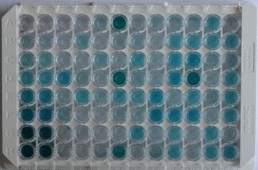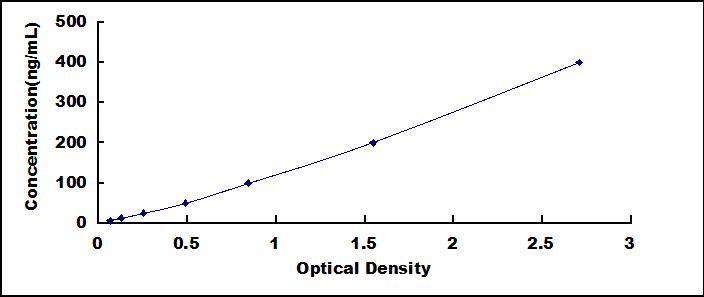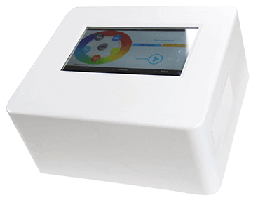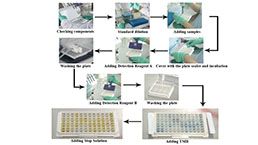Packages (Simulation)

Reagent Preparation

Image (I)
Image (II)
Certificate
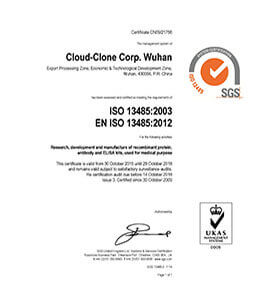
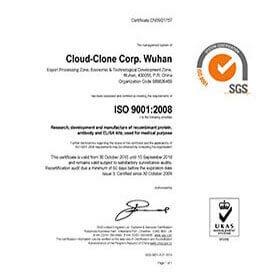
ELISA Kit for Osteonectin (ON)
SPARC; BM-40; Secreted Protein,Acidic,Cysteine-Rich; Basement-membrane protein 40; Secreted protein acidic and rich in cysteine
- Product No.SEA791Ra
- Organism SpeciesRattus norvegicus (Rat) Same name, Different species.
- Sample Typeserum, plasma, tissue homogenates, cell lysates, cell culture supernates and other biological fluids
- Test MethodDouble-antibody Sandwich
- Assay Length3h
- Detection Range6.25-400ng/mL
- SensitivityThe minimum detectable dose of this kit is typically less than 2.14ng/mL.
- DownloadInstruction Manual
- UOM 48T96T 96T*5 96T*10 96T*100
- FOB
US$ 479
US$ 684
US$ 3078
US$ 5814
US$ 47880
For more details, please contact local distributors!
Specificity
This assay has high sensitivity and excellent specificity for detection of Osteonectin (ON).
No significant cross-reactivity or interference between Osteonectin (ON) and analogues was observed.
Recovery
Matrices listed below were spiked with certain level of recombinant Osteonectin (ON) and the recovery rates were calculated by comparing the measured value to the expected amount of Osteonectin (ON) in samples.
| Matrix | Recovery range (%) | Average(%) |
| serum(n=5) | 79-90 | 83 |
| EDTA plasma(n=5) | 78-105 | 91 |
| heparin plasma(n=5) | 86-95 | 91 |
Precision
Intra-assay Precision (Precision within an assay): 3 samples with low, middle and high level Osteonectin (ON) were tested 20 times on one plate, respectively.
Inter-assay Precision (Precision between assays): 3 samples with low, middle and high level Osteonectin (ON) were tested on 3 different plates, 8 replicates in each plate.
CV(%) = SD/meanX100
Intra-Assay: CV<10%
Inter-Assay: CV<12%
Linearity
The linearity of the kit was assayed by testing samples spiked with appropriate concentration of Osteonectin (ON) and their serial dilutions. The results were demonstrated by the percentage of calculated concentration to the expected.
| Sample | 1:2 | 1:4 | 1:8 | 1:16 |
| serum(n=5) | 81-91% | 87-101% | 94-105% | 93-105% |
| EDTA plasma(n=5) | 80-101% | 82-92% | 89-97% | 85-105% |
| heparin plasma(n=5) | 97-105% | 91-105% | 98-105% | 93-105% |
Stability
The stability of kit is determined by the loss rate of activity. The loss rate of this kit is less than 5% within the expiration date under appropriate storage condition.
To minimize extra influence on the performance, operation procedures and lab conditions, especially room temperature, air humidity, incubator temperature should be strictly controlled. It is also strongly suggested that the whole assay is performed by the same operator from the beginning to the end.
Reagents and materials provided
| Reagents | Quantity | Reagents | Quantity |
| Pre-coated, ready to use 96-well strip plate | 1 | Plate sealer for 96 wells | 4 |
| Standard | 2 | Standard Diluent | 1×20mL |
| Detection Reagent A | 1×120µL | Assay Diluent A | 1×12mL |
| Detection Reagent B | 1×120µL | Assay Diluent B | 1×12mL |
| TMB Substrate | 1×9mL | Stop Solution | 1×6mL |
| Wash Buffer (30 × concentrate) | 1×20mL | Instruction manual | 1 |
Assay procedure summary
1. Prepare all reagents, samples and standards;
2. Add 100µL standard or sample to each well. Incubate 1 hours at 37°C;
3. Aspirate and add 100µL prepared Detection Reagent A. Incubate 1 hour at 37°C;
4. Aspirate and wash 3 times;
5. Add 100µL prepared Detection Reagent B. Incubate 30 minutes at 37°C;
6. Aspirate and wash 5 times;
7. Add 90µL Substrate Solution. Incubate 10-20 minutes at 37°C;
8. Add 50µL Stop Solution. Read at 450nm immediately.
GIVEAWAYS
INCREMENT SERVICES
-
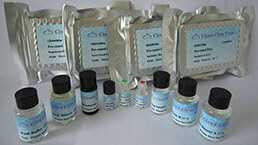 Single-component Reagents of Assay Kit
Single-component Reagents of Assay Kit
-
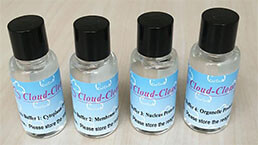 Lysis Buffer Specific for ELISA / CLIA
Lysis Buffer Specific for ELISA / CLIA
-
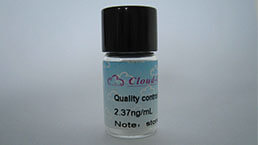 Quality Control of Kit
Quality Control of Kit
-
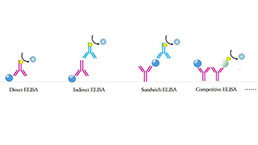 ELISA Kit Customized Service
ELISA Kit Customized Service
-
 Disease Model Customized Service
Disease Model Customized Service
-
 Serums Customized Service
Serums Customized Service
-
 TGFB1 Activation Reagent
TGFB1 Activation Reagent
-
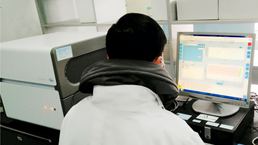 Real Time PCR Experimental Service
Real Time PCR Experimental Service
-
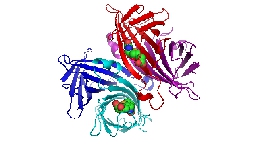 Streptavidin
Streptavidin
-
 Fast blue Protein Stain solution
Fast blue Protein Stain solution
-
 Single-component Reagents of FLIA Kit
Single-component Reagents of FLIA Kit
-
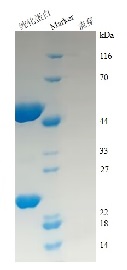 Streptavidin-Agarose Beads
Streptavidin-Agarose Beads
| Magazine | Citations |
| J Mol Med (Berl) | Growth hormone replacement therapy regulates microRNA-29a and targets involved in insulin resistance PubMed: 26199111 |
| Muscle Nerve | Effect of resistance ladder training on SPARC expression in skeletal muscle of hindlimb immobilized rats PubMed: 26467437 |
| Medicine (Baltimore) | An Attempt to Evaluate Selected Aspects of “Bone–Fat Axis” Function in Healthy Individuals and Patients With Pancreatic Cancer PubMed: 26266370 |
| British Journal of Cancer | A proteomics-based approach identifies secreted protein acidic and rich in cysteine as a prognostic biomarker in malignant pleural mesothelioma Pubmed:26889976 |
| Journal of diabetes and its complications | Associations between FGF21, osteonectin and bone turnover markers in type 2 diabetic patients with albuminuria. pubmed:27916484 |
| American journal of the medical sciences | Association of Bone Metabolic Markers With Diabetic Retinopathy and Diabetic Macular Edema in Elderly Chinese Individuals With Type 2 Diabetes Mellitus pubmed:29078839 |
| Translational Research in Oral Oncology | Testican 1 (SPOCK1) and protein tyrosine phosphatase, receptor type S (PTPRS) show significant increase in saliva of tobacco users with oral cancer Doi: 10.1177/2057178X18800534 |
| [ENGINEERING OF BIOMATERIALS | Osteoconductive potential of PLGA/bioglass composite biomaterials |
| Catalog No. | Related products for research use of Rattus norvegicus (Rat) Organism species | Applications (RESEARCH USE ONLY!) |
| RPA791Ra01 | Recombinant Osteonectin (ON) | Positive Control; Immunogen; SDS-PAGE; WB. |
| RPA791Ra02 | Recombinant Osteonectin (ON) | Positive Control; Immunogen; SDS-PAGE; WB. |
| PAA791Ra01 | Polyclonal Antibody to Osteonectin (ON) | WB; IHC; ICC/IF |
| PAA791Ra02 | Polyclonal Antibody to Osteonectin (ON) | WB |
| LAA791Ra71 | Biotin-Linked Polyclonal Antibody to Osteonectin (ON) | WB |
| LAA791Ra81 | FITC-Linked Polyclonal Antibody to Osteonectin (ON) | WB; IHC; ICC; IF. |
| MAA791Ra21 | Monoclonal Antibody to Osteonectin (ON) | WB |
| MAA791Ra22 | Monoclonal Antibody to Osteonectin (ON) | ICC/IF |
| SEA791Ra | ELISA Kit for Osteonectin (ON) | Enzyme-linked immunosorbent assay for Antigen Detection. |
| MEA791Ra | Mini Samples ELISA Kit for Osteonectin (ON) | Enzyme-linked immunosorbent assay for Antigen Detection. |
| LMA791Ra | Multiplex Assay Kit for Osteonectin (ON) ,etc. by FLIA (Flow Luminescence Immunoassay) | FLIA Kit for Antigen Detection. |
| KSA791Ra01 | ELISA Kit DIY Materials for Osteonectin (ON) | Main materials for "Do It (ELISA Kit) Yourself". |

